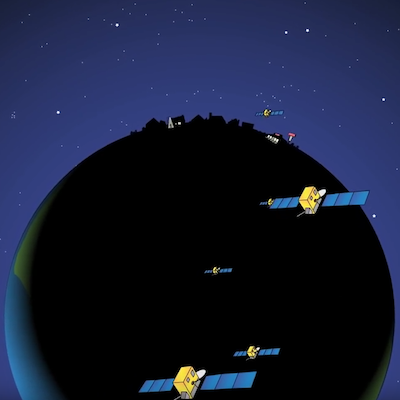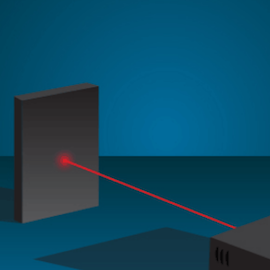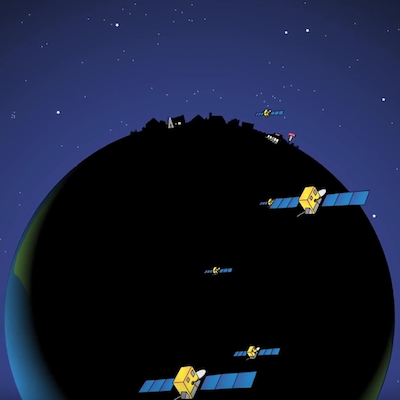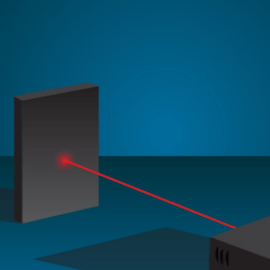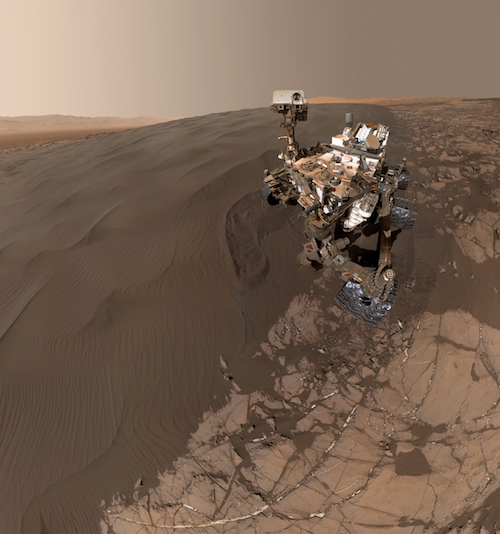
The Curiosity rover takes a self-portrait on a Martian sand dune. Credit: NASA/JPL-Caltech/MSSS
We can send robots to explore space without having to worry so much about their safety. Of course, we want these carefully built robots to last. We need them to stick around long enough to investigate and send us information about their destinations. But even if a robotic mission fails, the humans involved with the mission stay safe.
Sending a robot to space is also much cheaper than sending a human. Robots don’t need to eat or sleep or go to the bathroom. They can survive in space for many years and can be left out there—no need for a return trip!
Plus, robots can do lots of things that humans can’t. Some can withstand harsh conditions, like extreme temperatures or high levels of radiation. Robots can also be built to do things that would be too risky or impossible for astronauts.
What are some of the robots NASA is currently developing?
You’ve probably heard of some of NASA’s robots: the Mars rovers, like Perseverance and Curiosity. But those are just a few of the most famous robots. NASA engineers are working on new robots all the time.
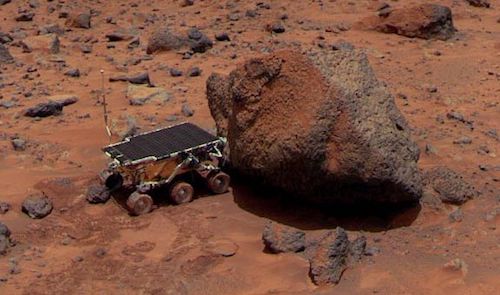
NASA has been investigating Mars with rovers since the Pathfinder mission landed in 1997 and deployed a small rover called Sojourner. Credit: NASA/JPL-Caltech.
One of the latest robots is nicknamed A-PUFFER, short for Autonomous Pop-Up Flat Folding Explorer Robot. The inspiration for this lightweight, two-wheeled adventurer came from origami designs. The robot can flatten itself out and duck down to investigate tight spots.
Watch this video to see Puffer in action! Video credit: NASA/JPL-Caltech
Then there’s BRUIE, the Buoyant Rover for Under-Ice Exploration. This robot can float in the water and roll its wheels along the underside of an icy surface, all while taking pictures and collecting data.
Scientists hope to someday use a robot like this to search for signs of life on icy bodies elsewhere in the solar system. For example, the underground oceans of Jupiter’s moon Europa or Saturn’s moon Enceladus.
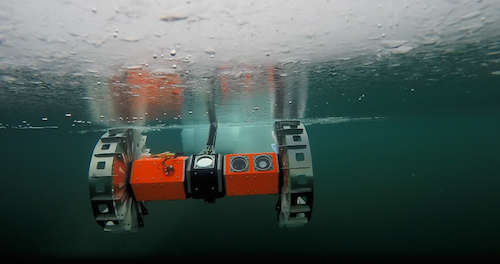
The BRUIE robot rolls its wheels on the underside of an icy surface. Image credit: NASA/JPL-Caltech
Are all of NASA’s robots rovers?
Certainly not! Take a look at this robot, called Hedgehog.
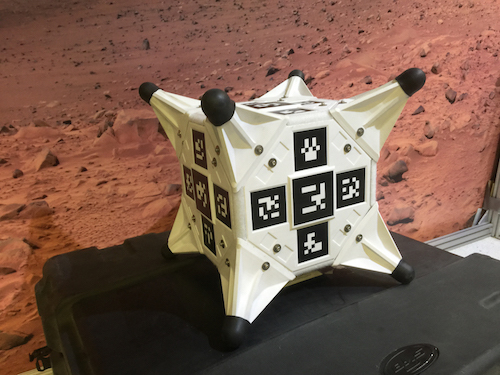
The spiky, cube-like Hedgehog robot. Image credit: NASA/JPL-Caltech/Stanford
This spiky cube of a robot is being developed by NASA with Stanford University and MIT. Hedgehog is designed to explore small bodies, such as asteroids or comets. These have very little gravity and extremely rough terrain. Instead of rolling, Hedgehog hops and tumbles.
What if it lands upside-down? No big deal. It can operate on any of its sides. It could even get itself out of a deep crater using a tornado-like maneuver that launches the robot into the air.
Does NASA make any robots that look like humans?
Yes! These are called humanoid robots. There are some tasks for which a robot that moves more like a human might be best. For example, we might like a humanoid robot to help prepare a future human settlement on Mars. With such tasks in mind, NASA’s Johnson Space Center has developed a robot named R5, or Valkyrie.
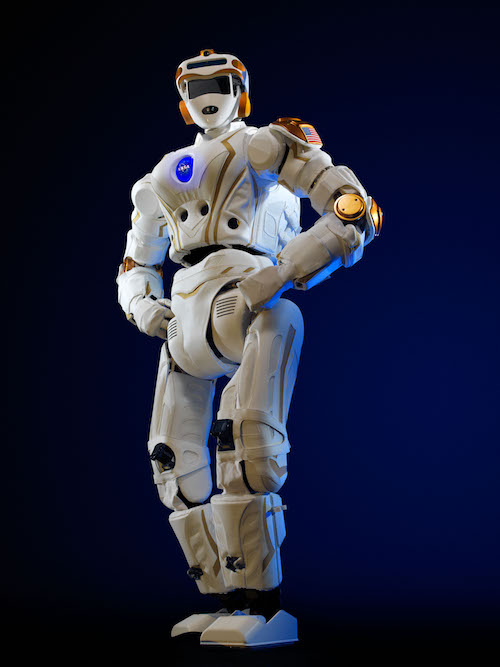
The humanoid robot, called R5, or Valkyrie. Image credit: NASA
This electric robot relies on cameras, sensors, lots of motors, and two computers. These tools help R5 to navigate its surroundings and move like a human.
Whether walking, tumbling, flying or rolling, robots have a major role to play in space exploration!
Related Resources for Educators
Classroom Activity: Design a Robotic Insect
Robotics at JPL: Precursors to Human Exploration



